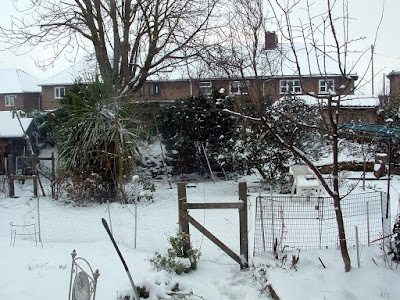 |
| From left, Days Three, Two and One; Feb 2018 |
Since we try to buy the best feed we can for our chickens, giving both them and us the best nutrition, our feed bill can be pretty expensive. We buy the non GMO, non soy feed, and a 20 kg bag in theory should last three weeks for our current flock of 12--but usually is closer to two weeks. Because of the threat of rats, I'm rationing out feed as carefully as I can so as not to have any lying around uneaten; this has helped cut back a little on waste, but it's still expensive.
During the winter when we were lucky to get two eggs a day (but getting none altogether just as often), we opted for the cheap feed. It's definitely soy, definitely GMO, but also half the price. To feed a flock of freeloaders, we made concessions to our ideal standards. But it's coming on spring: we want to breed chicks, we want those now three to four eggs a day to be good quality: expensive stuff again.
To help alleviate costs just a little, I've been soaking and fermenting their daily scratch grains treat. It's mixed wheat and corn, and about the same price per kilo as the cheap feed. They love it dry, but are very partial to fermented.
I have three big jars on the go, and every day the chickens get the three-day-old jar. It's basically two and a half cups of grain soaked in water (at room temp) for three days. I usually add a little of the oldest soaking water to the newest jar, but that's it. Easy as anything, and the chickens love it.
I've read than fermenting makes the vitamins/minerals in foods more bioavailable so that chickens (or any other animals, including people) get more nutrition than from the same amount of dry food. It's also probiotic, a definite plus. And finally, the chickens don't need to eat as much to be full; whether that's from the added nutrition or from the swelling in size I don't know, but less feed eaten means less feed to buy and I'm for that.
I don't currently ferment their regular layers pellets, although it's an option for the future. I've made warm mash for them in winters past, so it's just a step beyond that to ferment, possibly saving me even more money. It would require a different feeding station, like a trough, however--to allow low status chickens equal time at the feeder. We've take to scattering their pellets (and scratch grains) around their yard so that everyone gets a chance, not just the top chickens: can't really do this with mash.
Just to be sure, I feed their full ration of regular feed during the morning and afternoon, before feeding their fermented mixed grains in late afternoon/evening. This is to make sure they get adequate amounts of layers pellets and its added minerals first.







